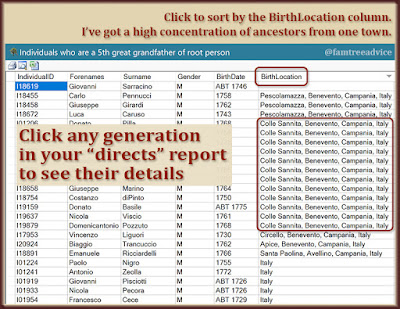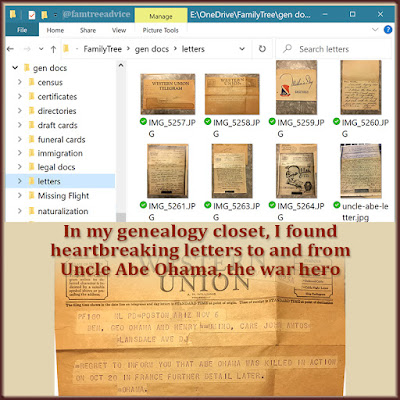Someone asked me why our ancestors left Italy when it's so beautiful there. I knew the answer, but I remember when I thought the exact same thing.
Then I read a bit of the country's history. Southern Italians faced overwhelming poverty while those in the north fared much better. The young men from the south could have taken factory jobs in the north. But there was too much competition.
Many made their way to the United States of America after hearing that jobs were plentiful. They were hard jobs in steel mills, railroad yards, and coal mines. But it was steady work and decent pay. My grandfathers seized the opportunity and applied for citizenship as soon as possible.
 |
| Being an immigrant is not easy. Why did your ancestors choose to leave? |
What was going on in your ancestral homeland when your ancestors emigrated? The FamilySearch website is a great place to begin your search. For instance:
- Germans left their country at many points in their history. The main reasons were poverty and religious persecution.
- Many early English emigrants went to America to improve their business prospects. Some were prisoners, sent to other countries. Some military personnel received land or money to stay in the place where they had served.
- The Irish fled famine and poverty. They were also suffering from religious persecution. Some sought political asylum, and others were prisoners sent to America.
- Italian emigration skyrocketed from 1870 to 1914. Young men sought the steady work they couldn't find at home.
A real-life library, or an online catalog search, can tell you why your ancestors moved. One thing is very clear. There has always been a ton of moving going on.
A table on Wikipedia shows the number of foreign-born people living in the U.S. by decade. Based on each census from 1850–2000, the table breaks down the numbers by country and region. (Note: The table is missing 1930 and 1940, and it ends a full 20 years ago.)
The table shows who was leaving their homeland in large numbers at certain times in history. One or more of these trends may apply to your ancestors. For instance:
- German immigration ranged from a half million and 2.7 million people each census year since 1850. It's never let up. In fact, the largest ethnicity in the USA is German at 14.7%*.
- The British Isles and Ireland ranged from nearly 1 million (1990 and 2000) to 4 million (in 1890) people. The English make up 7.8% of America, and the Irish are 10.6%.
- Italian immigration surged to 484,000 people in 1900, and a high of almost 1.8 million people in 1950. After that, quotas forced some of my relatives to go to Canada. Italians are 5.5% of Americans.
- French immigrants peaked at 153,000 in 1920. Relatively speaking, those are low numbers. In fact, the French comprise only 2.6% of Americans.
- Canada has ranged from almost 150,000 in 1850, to 1.3 million in 1950.
- The former Soviet Union hit its peak of more than 1 million people from 1910–1950.
- The former Czechoslovakia topped out at almost a half million people in 1950.
Some countries are seeing a dramatic rise in emigration:
- Mexico surged from 103,000 in 1950 to 9 million in 2000, with a big increase starting in 1980. Mexicans are 10.9% of Americans. That's now the 3rd highest percentage of Americans. First are Germans and second are non-Hispanic Blacks or African Americans.
- The Caribbean Islands began their surge in 1970 and reached almost 3 million strong in 2000.
- Chinese immigrants had many bans and restrictions in the 1800s. But they nearly doubled from 530,000 in 1990 to 989,000 in 2000. This ethnicity represents 1.2% of Americans.
 |
| Statistics paint a picture of nationalities fleeing oppression. |
While I adore Italy, and I feel at home in my ancestral hometowns, I know it is not the Italy my ancestors left behind.
I encourage you to learn a bit of the history of your "old country". You'll discover a new-found appreciation for your immigrant ancestors' sacrifices.
*The percentages of ethnicities in the U.S. comes from a 2019 article on the WorldAtlas website.
And speaking of emigration/immigration:










